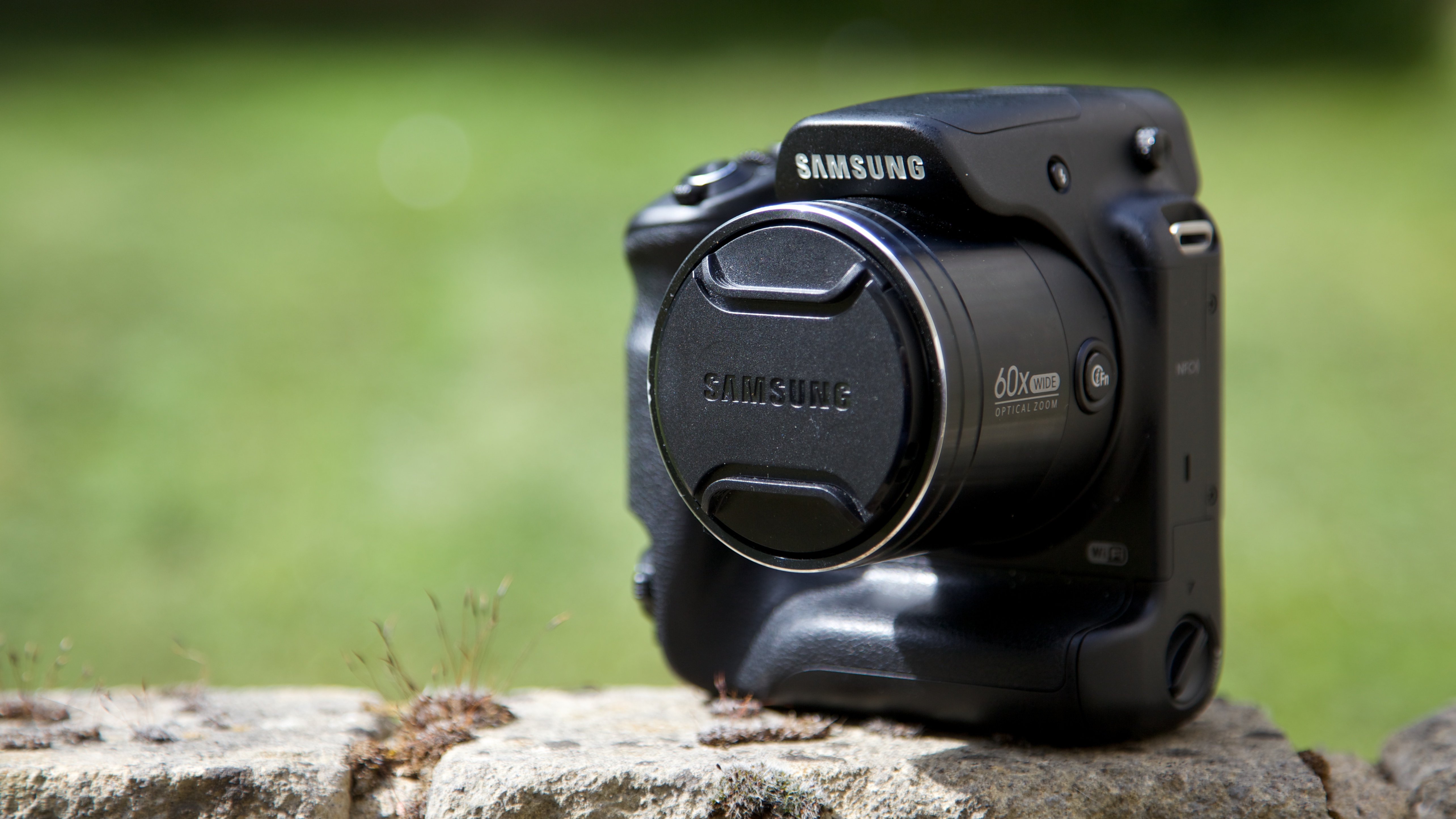TechRadar Verdict
A full-featured bridge camera that produces perfectly good images, but is let down by its AF system and a few interface quirks.
Pros
- +
Huge zoom range
- +
Every feature going
- +
Excellent wireless capabilities
Cons
- -
Flaky AF
- -
No touchscreen
- -
Not the best build quality
Why you can trust TechRadar
The first impression you get of Samsung's WB2200F smart camera is that it's square. Vertical grips have been common on cameras for many years, with add on units available for most DSLRs along with smaller devices such as the Sony A7r and the Panasonic GH4. Canon and Nikon have gone for permanently attached grips before, with their top of the range offerings like the D4 and 1DX, but it's unusual to see it on what can no longer be described as a compact camera.
To go with the unusually large body you get an unusually large lens. It's a 60x optical zoom that, in 35mm terms, is equivalent to 20-1200mm and offers digital zoom on top if you can live with the loss of quality. The lens also has a maximum aperture of f/2.8 at its widest setting, closing to f/5.9 at full stretch. Inside, there's a 16.4MP backside illuminated 1/2.3in CMOS sensor, which outputs to a three-inch 460K-dot TFT LCD on the back, as well as a small electronic viewfinder that can be activated with the press of a button.
The 'smart camera' designation brings wireless communication to the camera, connecting with a smartphone app for basic remote control functionality and connecting directly to the internet to share images to social media.
The 60x zoom honor is shared by a few other cameras on the market. There's Nikon's Coolpix P600 which has Wi-Fi, and Panasonic's Lumix FZ72 which doesn't. Both these cameras also boast around 16 megapixels, have more traditionally shaped bodies, and can be had for slightly less money than the WB2200F.

Samsung has certainly not held back on features for the WB2200F. There's Optical Image Stabilisation, which we'd certainly hope for with such a long zoom, built-in Wi-Fi and NFC, 1080p/30fps video, a continuous drive mode of up to 8fps for short bursts and the full range of exposure modes, including manual. You can even manually focus the lens, should you feel the need to, although there's no raw image support.
Build quality and handling
I found the controls on the WB2200F are sensibly positioned, with an iFn button on the side of the lens quickly switching between variables such as aperture and ISO sensitivity. These parameters can then be altered with the control wheel near the shutter button.
But there's no getting over that grip. Showing it to people elicits frowns, then a brief moment of realisation as you demonstrate the additional shutter button that allows you to shoot in portrait mode without bending your hand over the camera. Then a shrug.
Sign up for breaking news, reviews, opinion, top tech deals, and more.

As is common with DSLR grips, the extra space is used to add additional battery life – the 1400mAh cell that fits into it keeps going for an impressively long time and is larger than that seen in many other compact or bridge cameras, in fact it's getting on for DSLR sized. The grip also adds additional stability when using the zoom at its longest setting: pressing the EVF to your eye and clamping the camera against your face while supporting the lens with the other hand will, in concert with the OIS, keep the lens reasonably steady. Expect a degree of drifting and wandering if you're trying to keep it fixed on a small, distant target, however.
Helpfully, the grip gives you an additional shutter release button and control wheel, plus a lock switch to turn it on and off. The exposure compensation button is duplicated on the back of the camera too, so it can be easily reached by sliding a thumb across from the rubber pad it naturally rests on – a thoughtful design feature. Tripod or monopod shooters haven't been so well supported, however, as there's only one screw attachment underneath the camera. You'll have to use an L-bracket or tip the tripod head to shoot in portrait mode.

Unfortunately, its build rather lets the WB2200F down. It feels cheap and plasticky, with a noticeable wobble to the shutter release button under your finger. The covers over things like the micro USB port and SD card slot pop open easily enough, but are held in place with simple plastic pins that look as if they could snap. The battery compartment also rattles as it flips open after you turn the lock. Even the pop-up flash is activated with a spring and plastic switch arrangement, rather than the classier magnetic design. Happily the lens feels more solid, refusing to wobble even at full extension.
Portrait handling is improved by the presence of the vertical grip, allowing you to tuck your elbow in to your body more easily rather than having it stuck out to the side. The rest of the time, while it doesn't exactly get in the way, it adds to the bulk of the camera. With a 60x zoom this was never going to be pocketable, but its size and shape make finding a case to fit it more difficult.

The non-articulated, non-touch-sensitive screen also suffers from a poor viewing angle, and can be hard to make out in anything approaching full sunlight. Using the EVF gets you around this, but the image it produces is small and seems far away.
